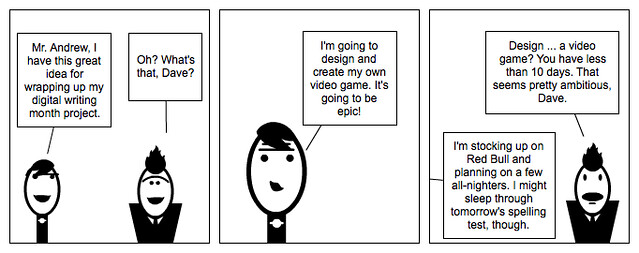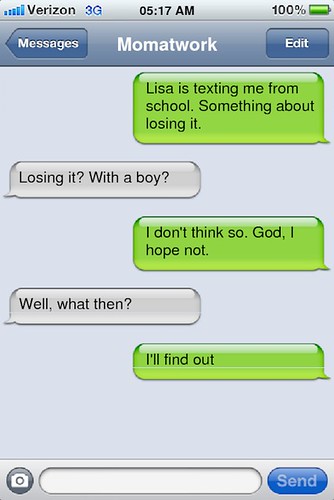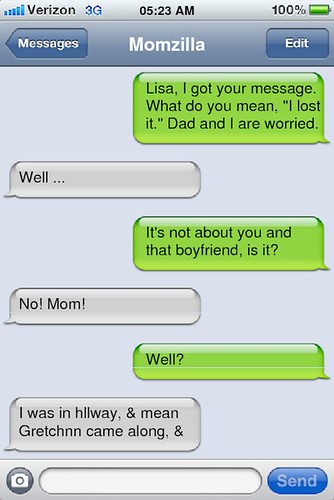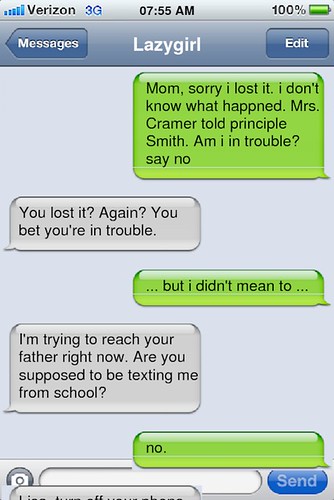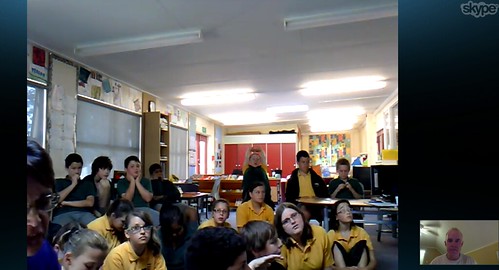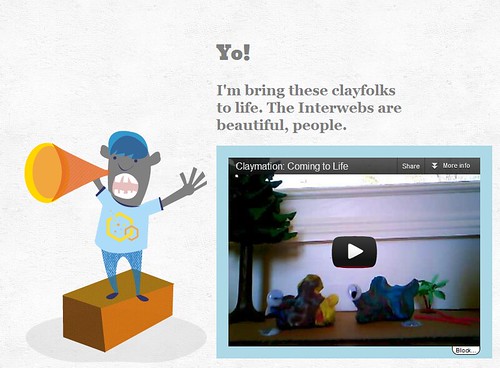
We started what could unfold as an interesting unit yesterday around media criticism. Our work will revolve around the reading of Three Cups of Tea, which we read a few years ago but then abandoned when the controversy erupted last year with a 60 Minutes investigative report on Greg Mortenson and Jon Krakauer’s scathing Three Cups of Deceit book. We’ve decided to revisit the book with our sixth graders for a number of reasons:
- It’s non-fiction (or is it?) and we need to be exposing full-length non-fiction to our students
- It provides a platform to cast a critical eye on the publishing process
- It allows us to talk about hero worship, and potential and pitfalls of that trait in our culture
- It allows us to re-examine the nature of lying
- It allows us to see how one person can still make change in the world, if they have passion
- It allows us to not only look at Mortenson, but also the media’s response to Three Cups of Tea in light of the controversy
In short, a reading of the book in light of the controversy is a foot in the door to teaching media criticism on multiple levels — from the writing/publishing of the book (Mortenson defends the “truth and lies allegation” by blaming the use of a ghostwriter and publisher); to the slippery slope of retelling of false events and facts in support of the larger ideal (he raised a lot of money to build schools in places in the world that require our attention but rarely get it); to the genre of investigative journalism and the fairness of those kinds of reports; to the media portrayal and our own perceptions of the Middle East (ie, everyone must be a terrorist).
Yesterday, I showed my class the 60 Minutes piece but first, we had a long discussion about fiction versus non-fiction, and where the “truth” resides in writing a book, and whether a writer as a “literary license” to tweak with the facts in order to tell a good story. It was an amazing discussion that unfolded differently in all four classes, and yet, it went deep into our conceptions as readers and our expectations as readers to be sold a true bill of goods. If it is non-fiction, my students said, they want it to be true. Otherwise, they do not trust the messenger (ie, the writer).
We also talked about our school, like many others, raised and donated a few thousand dollars to Mortenson and his organization via the Pennies for Peace program. Almost everyone raised their hands when I asked if they had contributed to Pennies for Peace when we ran it at our school. A fifth grade teacher who organized the coin drive also took a group of students to see Mortenson speak, and they met him personally, handing over the check from our school. In other words, my students have a vested interest in this story.
Today, we will be looking at an interview Mortenson gave to Outside Magazine to rebut the charges against him and his foundation — The Central Asia Institute — so that we get his own voice into the mix, and begin talking about how to make sense of the various sides of an issue.
The trick for me as the teacher is to avoid teaching cynicism here. What I want are critics — young people with eyes wide open to the world of media and information, and the development of internal filters around what they read and what they view on screens (for example, many students ripped into 60 Minutes for not working harder to bring on supporters of Mortenson to rebut the claims against him, although they did try to contact him and even ambushed him at a book-signing event.) If all I have done at the end is nurture cynicism, then the time has been wasted.
Peace (in the cups),
Kevin


 imagine
imagine